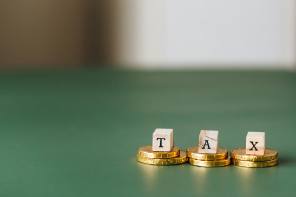

Personal tax allowance increases and further measures against large firms avoiding tax were high on the chancellor's Budget agenda.
"I didn’t come into politics to put people’s taxes up", chancellor Philip Hammond pledged in his latest Budget speech, delivered to a raucous House of Commons today (October 29).
In the Budget, the self-proclaimed 'Fiscal Phil' said he would be bolstering the incomes of ordinary people in the UK by bringing forward planned changes to personal allowances into 2019.
The Budget stated: "The personal allowance – the amount you earn before you have to start paying income tax– will increase by a further £650 in April 2019 to £12,500."
This increase comes a year earlier than planned, and will be maintained in 2020.
This means a basic rate taxpayer will pay £1,205 less tax in 2019 to 2020 than in 2010 to 2011.
Also, the higher rate threshold will increase from £46,350 to £50,000 in April 2019.
This means the amount people will have to earn before they pay tax at 40 per cent will increase from £46,350 to £50,000 in April 2019.
This means that in 2019 to 2020, there will be nearly one million fewer higher-rate taxpayers than in 2015 to 2016, according to HM Treasury.
There was also good news for drivers, when Mr Hammond said that, in 2019, fuel duty will remain frozen for the ninth year in a row, saving the average driver £1,000 since 2010, and the cost of a pint of beer would be 2p lower than if duty had risen by inflation.
But there was bad news for the FAANGs and other tech giants gaining revenue from the UK yet not paying enough tax.
The chancellor said: "From April 2020, large social media platforms, search engines and online marketplaces will pay a 2 per cent tax on the revenues they earn which are linked to UK users."
He added: "We are at a turning point in our history and we must resolve to go forwards, not backwards."
However, industry commentators have questioned whether these tax pledges will be enough to keep consumers and the economy moving as the UK heads towards its European Union exit in March 2019.
Russell Silberston, head of multi-asset absolute return at Investec Asset Management, said: “There are only four ways in which the government can spend more money; higher taxation, unfunded borrowing, higher economic growth or efficiency gains.
“In the event of a hard Brexit, it is widely assumed that there will be a severe economic shock which will put the government’s finances back under strain as automatic stabilisation spending increases and receipts fall.
"The Chancellor is then faced with an unappealing choice; he can raise taxation in the face of an economic slowdown, or he can allow spending to rise on an unfunded basis.
“Given the former is pro-cyclical, it seems his only choice would be to allow automatic spending to rise. There will, however, be a modest offset from contingency funding which the chancellor has been holding back in case we do end up leaving the EU without a deal."
For a snapshot of the tax changes - or the non-changes - see the full table below.
| Tax | Changes in 2018 Budget | Changes in Autumn Budget 2017 | Changes in 2016 Autumn Statement |
| Income tax and personal allowances | Personal Allowance goes up to £12,500 from April 2019, one year sooner than was stated last year. The Higher Rate Threshold will be increased to £50,000 from April 2019. | In April 2018 as previously mentioned, personal allowance will rise to £11,850 and the higher rate threshold to £46,350. NEW: Government will now allow claims for marriage allowance in cases where a partner has died before the claim was made, and can be backdated for up to four years. | Gov't pledges to meet commitment to raising income tax personal allowance to £12,500 and the higher threshold to £50,000 by end of this parliament. Once it reaches £12,500, it will rise in line with CPI. |
| Dividend tax | No changes mentioned; dividend allowance remains at £2,000 | No changes mentioned; the drop to £2,000 from £5,000 came into force. | From 6th April 2016, after including a £5,000 'dividend tax allowance', dividends are taxed at 7.5%, 32.5% and 38.1% (basic, higher and additional bands). |
| Pension allowance | No changes to the PAA mentioned. The lifetime allowance for pension savings will rise in line with CPI for 2019-20, rising to £1,055,000 | No changes mentioned; as mentioned in the spring Budget the lifetime allowance will rise in line with CPI, to £1.03m for 2018-2019. | No changes announced to pensions allowance. However, Money Purchase Annual Allowance will be reduced to £4,000 from April 2017. From 6 April 2018, the government still intends to index the standard Lifetime Allowance annually in line with CPI. |
| Capital gains tax | With regard to Entrepreneur's Relief, in addition to the current requirements on share capital and voting rights, from 29 October 2018 shareholders must also be entitled to at least 5% of the distributable profits and net assets of a company to claim the relief. This is to address an identified abuse of the current rules. | No changes; as previously announced, the 30-day window between a capital gain arising on a residential property and payment will be deferred until April 2020. | Tax advantages linked to employee shareholder status will be abolished for arrangements entered into on, or after, December 2016. |
| Bank levy | The bank levy will reduce over the next six years to £1.1bn by 2023-24 | Government has committed £36m more of banking fines over the next three years to support armed forces charities and other good causes. | Bank levy charge will be restricted to UK balance sheet liabilities from 1 January 2021. |
| Inheritance tax | No changes mentioned | No changes mentioned | Gov't confirms that from April 2017, IHT will be charged on UK residential property when held indirectly through an offshore structure |
| Corporation tax | restrict use of Tax carried forward capital losses from 2020-21 | Government will increase R&D expenditure credit from 11 per cent to 12 per cent. | Gov't pledges to uphold the 17 per cent cut and reduce burden of business rates by £6.7bn over next five years. |
| Tax on savings interest | No changes mentioned | No change | Isa allowance rises will be as outlined by George Osborne in his Spring Budget in 2016. Gov't is to equalise tax treatment between offshore and onshore funds. |
| National Insurance Contribution | Delay NICs Bill by one year and maintain Class 2 NICs. | Government will delay implementing a series of NICs policies by one year; it confirmed the government will no longer proceed with an increase to the main rate of Class 4 NICs from 9 per cent to 10 per cent. | Proposals to end class 2 Nics |
| Stamp Duty Land Tax | Stamp duty is to be abolished for all first-time buyers in shared ownership properties up to £500,000. Gov't will publish a consultation in January 2019 on a SDLT surcharge of 1% for non-residents buying residential property in England and Northern Ireland. | New: reduction of upfront costs for first-time buyers by removing SDLT on properties up to £300,000 nationally and for London and the South East, the first £300,000 of properties worth up to £500,000 | |
| Environmental taxes | Tax levels in the oil and gas industry to remain unchanged. There will be a new tax on the manufacture and import of plastic packaging which has less than 30% of recyclable plastics. | ||
| New: Digital Services Tax | From April 2020, large social media platforms, search engines and online marketplaces will pay a 2% tax on the revenues they earn which are linked to UK users. | ||
| Annual Investment Allowance | The government will increase the Annual Investment Allowance five-fold from £200,000 to £1 million to help businesses to invest and grow. Also, from October 2018, businesses will be able to deduct 2% of the cost of any new non-residential structures and buildings off their profits before they pay tax. | ||
simoney.kyriakou@ft.com



